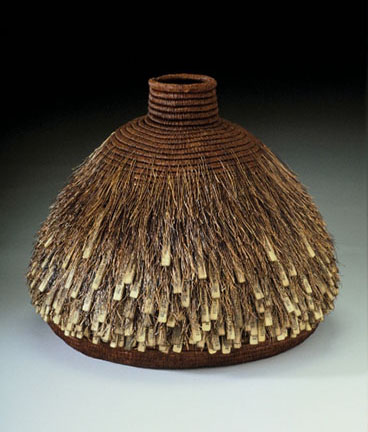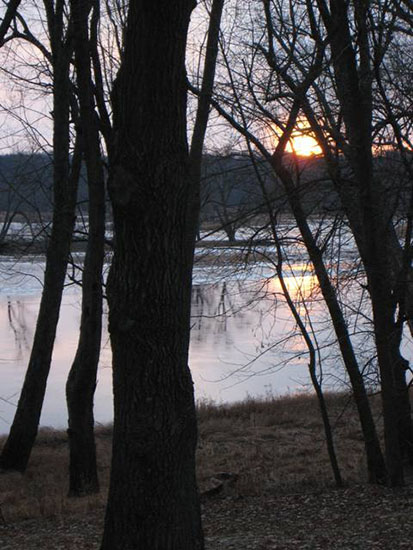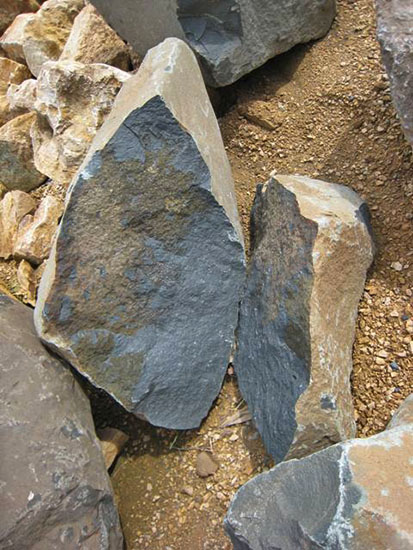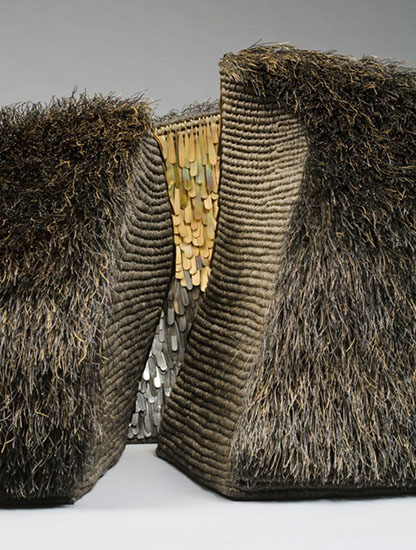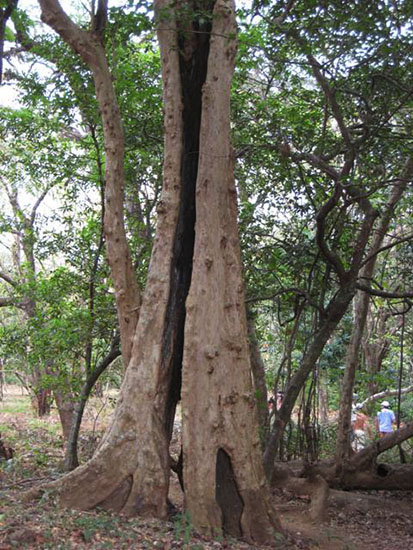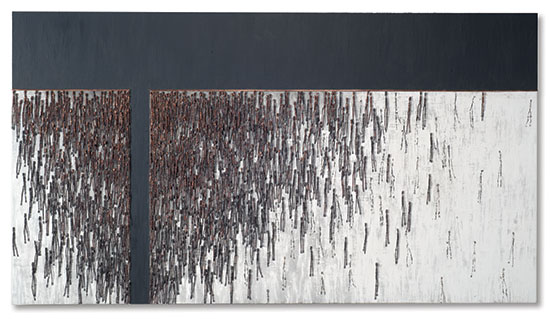In April, Mary Giles received the Master of the Medium Award for Fiber from the James Renwick Alliance. In receiving the award, Giles spoke of her process and her sources of inspiration:
“I have always been influenced by place and especially the natural world in those places. In the early 80’s, having taken up scuba diving, I did a series based on sea life called “walking tentacles.” Later, during many trips to New Mexico, I discovered mesa forms as well as Native American kivas and petroglyphs. Those sources dominated my work for over 10 years. Most recently the changing light, colors, and patterns seen from our retirement home on the banks of the St. Croix River in Minnesota have informed by work. My ideas are an accumulation, my sources most often from nature and my pallet is drawn from the colors of earth, water, wood and stone.
I’ve been drawn to the woods most of my life, from childhood summers at a log cabin in northern Minnesota, to the redwoods of northern California, to the tropical jungles of Costa Rica, and now at our current home on the banks of the St. Croix River. From the St. Croix shore I have photographed many sunrises, reflections, shadows and moonlit nights. These scenes continually change throughout the day, from day to day, and season to season.
The materials I use on the surface of the coiled forms are often individually hammered pieces of twelve- to eighteen-gauge wire made of copper, tinned copper, iron, lead or brass. In addition I use waxed-linen thread and fine wire. By torching the metals I am able to alter the colors in varying degrees enabling me to blend them from darks to brights. I use this blending to interpret the colors, textures and light that I see in the natural settings.
I became particularly excited about rocks ten years ago when my husband and I decided to build an addition to what was to become our retirement home. Because this home is on a river in an old glacial landscape, the dozer unearthed a mountain of boulders. Philip Johnson, the architect, said, “I never met anyone who can talk about a pile of rocks.” Well, I never met Philip Johnson. I have photographed rocks in many parts of the world. I’m interested in all sorts of rocks: broken rocks, large rocks, pebbles and boulders. I love their surfaces aged by wear or accumulations. I find many forms in their crevices and shadows.
In the winter we often go to a relatively remote Pacific location in Costa Rica. I spend hours walking the beach photographing yet more rocks, driftwood, and wave and animal patterns in the sand. On the walks I always carry two bags, one for trash and one for treasure.
In my studio I begin a new idea with a sketch. Most recently I have been building clay models. The models have helped me work through details and attempt more complex forms. I’m often asked how long it takes to complete a vessel. I don’t usually keep track but I do remember my first basket from the late 1970’s, three inches high, took twelve hours. My most recent piece, which is fifty inches long, took five months.
Six years ago I started doing wall panels that dealt with my concerns about population. They are not baskets but the men they incorporate have been on my vessels for nearly thirty years. The first expression of this theme was directly on a 10 X 30-foot gallery wall. It was composed of hundreds of torched copper wire men arranged outwardly from dense to sparse. I am still working with these ideas of overpopulation, density and boundaries.
The architect Le Corbusier said “creation is a patient search.” I so enjoy this peaceful experience. I feel fortunate to have found this work for myself. I am very grateful for your generous support. Thank you. “
Mary Giles – April 2013


